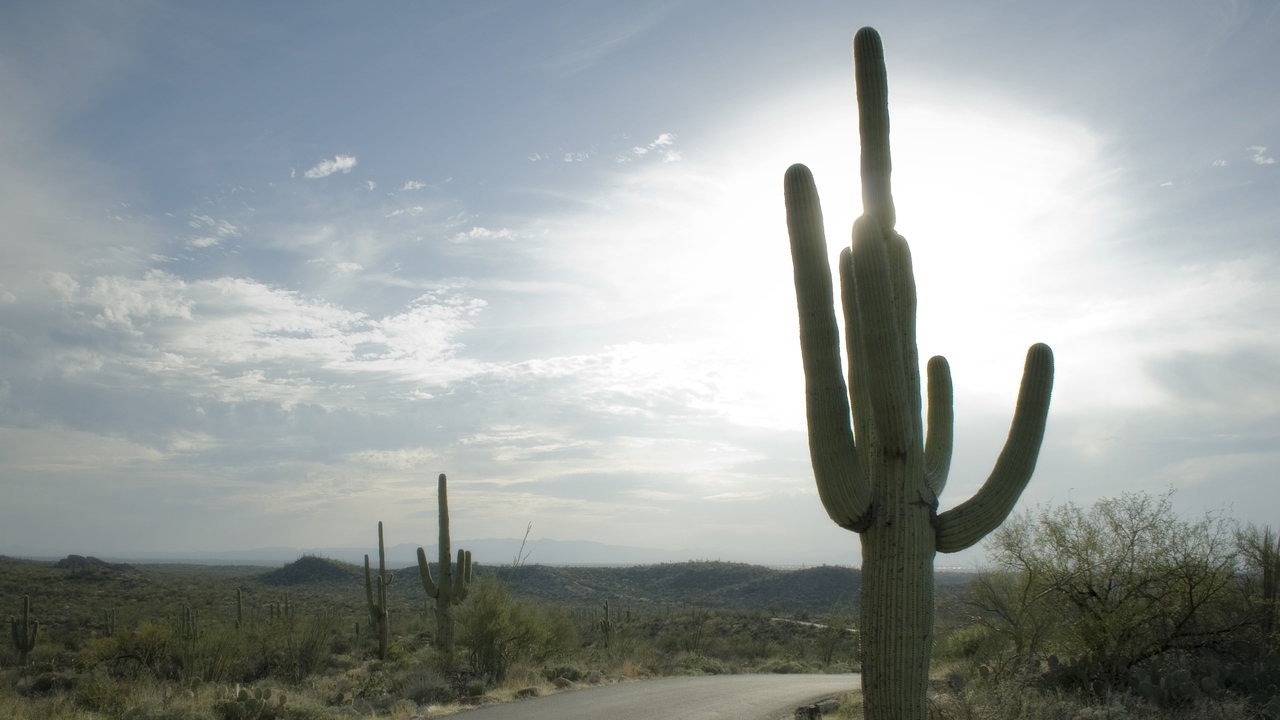 Jeff DeMent/PhotoSpin
Jeff DeMent/PhotoSpin
Human-caused climate destruction is making us sick. Global climate change is altering our day-to-day lives and becoming an unprecedented public health threat. And unlike infectious pandemics, climate change doesn’t heed global borders — it ignores HAZMAT suits and quarantines and our most advanced medicines.
The effects are geographically unique, so the health risks that we face in Arizona will be different from what people in Maine are going to struggle against. But climate change affects most aspects of public health and it will affect us all, regardless of where you might live.
Our changing climate deteriorates the air quality, which increases respiratory and cardiovascular diseases. It forces people to face more prevalent food-and-waterborne illnesses.
It causes an uptick in extreme weather events that will injure and kill more people than similar storms in previous years. And it increases chances that the public will contract and then spread a life-threatening infectious disease.
But learning and preparing for these ailments can help us cope with the upcoming climate health effects.
So what are we going to be facing?
Air Pollution
Most of the Southwestern United States isn’t going to plunge into a smog cloud akin to the levels of Beijing, but our air quality is going to significantly worsen.
Ground level ozone, which is a key component of smog, forms from air pollution spouted by vehicles, industrial factories, livestock and other sources. An increase in temperatures consequently spikes the amount of smog trapped in cities and causes it to form faster.
Those rising temperatures also increase the amount of allergens in the air, such as ragweed, as an increase in carbon dioxide in the atmosphere causes plants to produce and release more pollen. And then those new plants might burn in the increasing trend of drastic wildfires. The smoke from those fires further degrades the air quality.
All of these problems put a wide range of people — from construction workers to kids on the playground — at risk for irritated eyes, throats and lung damage. The U.S. Environmental Protection Agency likens breathing ozone smog to getting sunburn on your lungs.
People who have asthma, allergies and other respiratory illnesses will struggle the most because the worsening air quality “heightens sensitivity to allergens, impairs lungs, triggers asthma attacks, sends people to the hospital, and even results in death,” according to a report by the National Resources Defense Council.
The CDC estimates that, assuming there isn’t a change in regulation or population characteristics, climate-caused air quality deterioration will result in from 1,000 to 4,300 additional premature deaths nationally, per year, by 2050.
Drought
Drought is the biggest news-grabber for many climate issues in the Southwest. But so long as water comes out of the faucet when people turn the knob, the consequences of water shortage don’t seem real.
Yet Las Vegas is steadily running out of water. So is much of southern California. The agriculture industry is struggling so much that California farms are using oil drilling refuse water to irrigate crops — despite not knowing what the potential health risks might be.
The longstanding and severe Southwest drought, caused by increased heat and changes to rain and snowpack, will send ripple effects throughout the region and affect 56 million people, and up to 94 million by 2050, the White House states in a report.
A reliable, clean water supply is crucial for living beings, agriculture, energy production, and ecosystems. The Southwest’s water reserves are already dwindling and constrained under current climate conditions. The EPA states that water allocations in the region, some of which were agreed upon almost a century ago, have become difficult to maintain. Added to this, an increase in groundwater pumping is lowering the already-low water tables. The warming climate is expected to worsen these conditions.
The lack of water will first hit agriculture the hardest, and that ripples to the rest of us in the form of decreased food supply and higher costs for any crops farmed in the West Coast and Southwest.
The increased temperatures combined with the lack of rainfall, river-flow reductions, dwindling reservoirs, and rapid population growth will also result in more wildfires and competition for water resources across states and even Mexico, the EPA argues.
Extreme Heat
Extreme heat is one of the most underrated and least understood deadly weather phenomena. Unlike visually destructive and violent weather events like floods, hurricanes and earthquakes, a heat wave is a silent, invisible disaster.
In 2014, half of the U.S. Southwest shouldered heat waves or extreme temperatures. Most of California, southern Nevada and southern Arizona faced record high temperatures.
These extended heat cycles are expected to continue to increase in length and severity through the coming years. The excess heat, combined with drought, also helps woodlands become fuel-laden wildfires waiting to ignite.
During heat waves, people are at higher risk of dying from heat stroke and its related conditions, but also from cardiovascular disease, kidney and respiratory disorders, and cerebrovascular disease, the CDC states.
The heat also disproportionately affects low-income and elderly communities because the only effective way of escaping the unrelenting temperature is often air conditioning, which isn’t always available due to rising energy costs and infrastructure limitations.
The excessive use of air conditioning also exacerbates the problem by pumping heat back out into cities. It increases smog levels and create urban heat islands, which cause further problems for those stuck outside. Plus, the extra demand on energy infrastructure can cause rolling blackouts and place even more people at risk of heat exhaustion or heat stroke.
The good news is that some heat-related risks have diminished in recent decades because of better forecasting, heat-health early warning systems, and increased access to air conditioning for the general population, a White House climate report states.
However, the report also acknowledges that extreme heat events remain a cause of preventable death nationwide. As temperatures continue increasing, the capabilities of our health systems will be put to the test.
According to the CDC, 660 people die nationwide from heat waves each year, making it the leading cause of weather-related mortality in the country. Studies suggest that, if current emissions hold steady, excess heat-related deaths in the United States could climb from the current average of about 700 each year to between 3,000 and 5,000 per year by 2050.
To withstand whatever the future climate holds, we need to fundamentally rethink how we use our resources and adequately prepare for more health dangers.
We need to make people healthier by focusing on preventative health care — because healthier people are more resilient to climate impact than unhealthy people — and investing in curbing the already-present effects of climate change. Only then will we stand a chance against the upcoming problems.
Sources
Climate and Your Health: Addressing the Most Serious Health Effects of Climate Change. Retrieved June 4, 2015.
http://www.nrdc.org/health/files/climatehealthfacts.pdf
Healthcare: Great for patients, but what about the environment? Retrieved May 28, 2015.
http://www.nuemd.com/blog/healthcare-great-patients-environment
Climate Change Threatens Health. Retrieved June 1, 2015.
http://www.nrdc.org/health/climate/airpollution.asp
Impacts on Human Health. Retrieved May 29, 2015.
http://www.epa.gov/climatechange/impacts-adaptation/southwest.html#impactshuman
Climate Change Arizona. Retrieved May 29, 2015.
https://www.whitehouse.gov/sites/default/files/docs/state-reports/arizona_nca_2014.pdf
Primary Protection: Enhancing Health Care Resilience for a Changing Climate. Retrieved June 1, 2015. http://toolkit.climate.gov/sites/default/files/SCRHCFI%20Best%20Practices%20Report%20final2%202014%20Web.pdf
Reviewed June 23, 2015
by Michele Blacksberg RN
Edited by Jody Smith





Add a CommentComments
There are no comments yet. Be the first one and get the conversation started!